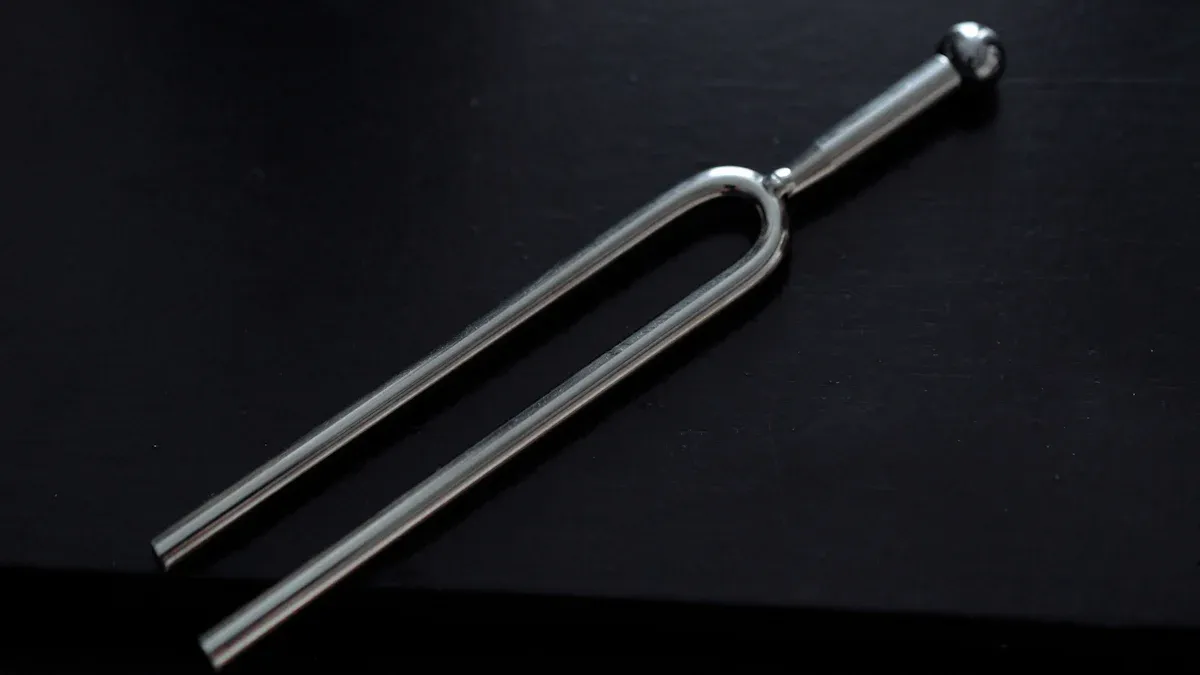Optimizing Frequency Vibrations in Compact Motor Applications: Best Practices and Solutions

Optimizing frequency vibrations is crucial for enhancing the performance of small motors. Reduced vibrations lead to smoother movement and less wear on components, which ultimately helps the motor to last longer and function effectively in challenging environments.
Electromagnetic interference (EMI) can complicate the operation of small motors, disrupting sensitive electronics. For instance, electric car sales reached a record high in March 2021, highlighting the demand for reliable motors. Addressing EMI through effective strategies makes motors more trustworthy. One approach to minimize EMI is the use of low-noise solid-state relays, which contribute to the longevity of components. By optimizing frequency vibrations and employing smart techniques, we can ensure that motors remain stable and operational for extended periods.
Key Takeaways
Lowering vibrations makes motors work better and last longer.
Fix EMI problems by adding shields and quiet parts for better motors.
Check and balance rotors often to reduce vibrations and avoid damage.
Use special materials and computer models to control motor vibrations.
Try smart AI tools to find vibration problems early and keep motors strong.
Common Causes of Frequency Vibrations
Knowing what causes frequency vibrations helps improve motor performance. These vibrations often come from mechanical, electromagnetic, or design problems. Fixing these issues can lower noise, boost efficiency, and make motors last longer.
Mechanical Imbalances in Motor Design
Mechanical imbalances happen when motor parts are unevenly distributed. This unevenness causes forces during rotation, leading to vibrations. For example, an unbalanced rotor can shake and wear out bearings faster.
To fix these imbalances, you can:
Precision manufacturing: Make sure all parts are made accurately.
Dynamic balancing: Use machines to find and fix weight differences in rotors.
Regular maintenance: Check and replace worn parts to keep balance over time.
Fixing these imbalances reduces vibration and noise, making motors more stable.
Electromagnetic Interference (EMI) and Its Effects
Electromagnetic interference (EMI) is another big cause of vibrations. EMI happens when electromagnetic fields mess with motor control systems. Things like fast voltage changes and PWM switching can make EMI worse. This can cause motors to act strangely and create more noise.
To reduce EMI, you can:
Shield sensitive components: Use materials to block electromagnetic fields.
Optimize control systems: Use better algorithms to lower PWM effects.
Use low-noise components: Pick parts like solid-state relays to reduce EMI.
Lowering EMI cuts vibrations and makes motors more reliable in tough conditions.
Tip: Test for EMI often to find and fix problems early.
Design Constraints in Compact Motors
Small motors have design limits that can increase vibrations. Limited space and weight can mean fewer features like strong frames or vibration dampers. These limits make motors more prone to mechanical and electromagnetic vibrations.
Studies show how design choices affect vibrations. For example:
Mechanical and electrical parameters: These change vibration frequencies.
Simulation results: Models show how design limits worsen vibration problems.
Aspect | Description |
|---|---|
Modal Analysis | Finds vibration modes and their effects on motors. |
Mechanical Parameters | Includes rotor stiffness and bearing alignment. |
Electrical Parameters | Covers current harmonics and magnetic flux distribution. |
To handle these limits, you can:
Incorporate damping materials: Use materials that absorb vibrations without adding much weight.
Leverage advanced simulations: Test designs virtually to spot and fix problems.
Prioritize modular designs: Make designs easier to adjust and improve vibration control.
By solving these design issues, you can build small motors that work well with less noise and vibration.
Impacts of Frequency Vibrations on Motor Performance

Lower Efficiency and Higher Energy Use
Vibrations make motors less efficient. They interrupt smooth movement, wasting energy as heat and noise. This means the motor uses more energy and costs more to run over time.
You can fix this by controlling vibrations:
Check alignment often: Misaligned parts cause friction and waste energy.
Add vibration dampers: These materials reduce noise and steady the motor.
Improve motor design: Simulations help predict and fix vibration problems.
Controlling vibrations helps motors work better and save energy.
Shorter Motor Life from Wear and Tear
Vibrations wear out motor parts faster. Bearings, rotors, and other pieces face more stress, breaking down sooner. High-frequency noise also damages delicate areas, making the motor fail earlier.
To make motors last longer:
Do regular maintenance: Replace old parts before they break.
Choose strong materials: Use parts that handle vibration stress well.
Balance rotors properly: Balanced rotors lower uneven forces that cause damage.
Less vibration protects motor parts and makes them last longer.
Less Reliability in Tough Jobs
In demanding jobs, motors need to be reliable. Too much vibration can make them act unpredictably. For example:
An aerospace company tested landing gear under different vibrations.
Unexpected vibrations caused damage and risked failure.
A redesign made the part stronger and safer.
To improve reliability:
Do modal analysis: Find vibration patterns that hurt performance.
Use smart monitoring tools: AI systems catch vibration problems early.
Design for vibration resistance: Modular designs help compact motors handle stress.
Reducing vibrations keeps motors dependable in tough industries like aerospace and automotive.
How to Optimize Frequency Vibrations in Motors
Balancing Rotors the Right Way
Balancing rotors helps reduce vibrations in motors. Unbalanced rotors cause uneven forces, leading to more vibration and lower performance. Fixing this problem requires careful engineering steps.
Dynamic Balancing: Machines measure rotor weight and fix uneven spots. This makes rotation smoother and lowers vibration.
Regular Checks: Inspect rotors often for damage. Replace worn parts to keep balance steady.
Critical Speed Control: Find and avoid speeds that cause extra vibration. Staying away from these speeds helps motors last longer.
Tip: Use tools like vibration absorbers or isolators to cut down rotor vibrations. Adding a tuned mass-spring-damper system can absorb unwanted shaking.
Balancing rotors improves motor function and protects parts, making them last longer.
Picking Materials to Reduce Vibrations
The materials used in motors affect how much they vibrate. Choosing the right ones can improve sound and movement while keeping the motor small.
Damping Materials: Add special materials that soak up vibrations without adding much weight.
Strong Lightweight Metals: Use durable but light metals for motor parts. These reduce vibration and stay strong.
Composite Materials: Use materials that block noise and vibrations well. These improve motor performance.
Tests show that damping materials and isolators can stop unwanted vibrations. For example, shielding cables and isolating vibration sources make motors work better in sensitive jobs.
Note: Test materials in real-world conditions to see if they work. Check vibration and sound levels before using them in motors.
Good materials lower vibrations and make motors more reliable in tough situations.
Using Smart Systems to Lower EMI
Smart systems help control EMI and improve motor performance. These systems use advanced methods to manage electromagnetic interference and reduce noise.
Test Type | What It Does |
|---|---|
Military EMI Standards | Tests how systems handle electromagnetic challenges like emissions. |
IEEE Shielding Standards | Measures how well shields block electromagnetic waves. |
Real-Life Testing | Checks equipment under radar and electronic jamming conditions. |
Steps to use smart systems:
Add Shields: Cover sensitive parts to block electromagnetic fields. This protects motor controls from EMI.
Install EMI Filters: Use filters to stop unwanted emissions. These improve motor performance and reduce noise.
Use VFDs: Variable frequency drives control motor speed and lower EMI effects.
Tip: Ground motor parts properly to stop EMI from causing problems.
Smart systems reduce EMI and vibrations, making motors dependable in high-stress jobs.
New Ways to Lower EMI and Vibration
Using Tuned Mass Dampers to Control Vibrations
Tuned mass dampers (TMDs) help reduce motor vibrations. They work by canceling out unwanted shaking with their own movements. TMDs make motors quieter and perform better. They are often more effective than older vibration control methods.
Damper Type | How Well It Works | Durability | Sensitivity to Mistuning |
|---|---|---|---|
UTLCD | Very effective | Less durable | Similar to DTMD |
TTMD | Effective | More durable | Less sensitive |
DTMD | Effective | Most durable | Less sensitive |
Pick the right damper for your motor's needs. For example, TTMDs are great for tough environments, while UTLCDs are best for reducing strong vibrations. Choosing the right damper improves noise control and motor stability.
Smart AI Tools for Monitoring and Maintenance
AI tools are changing how motors are checked and fixed. These systems study data to find problems early and stop failures. For example:
AI finds vibration patterns that could break bearings in two days.
It spots hidden issues without needing past examples.
Deep learning reads sensor data to catch small motor changes.
Big companies already use AI to avoid breakdowns. One aluminum company uses AI to predict repairs two weeks ahead. This saves money and prevents delays. Adding AI to motors boosts performance, lowers noise, and keeps them reliable.
Accurate Manufacturing for Better Motor Performance
Making motor parts precisely helps cut vibrations and EMI. Careful production ensures parts fit well, avoiding balance problems. Advanced tools like CNC machines and lasers create exact parts, reducing noise and shaking.
Precision also lets you add materials that absorb vibrations. These materials work well without making motors heavier. By focusing on accuracy, you can build small motors that work smoothly and last longer.
Fixing vibrations and EMI in small motors improves how they work. Vibrations can harm parts, waste energy, and make motors wear out faster. Using systems to stop vibrations helps protect parts and makes motors last longer. This also means fewer breakdowns and lower repair costs. Balancing rotors and using smart tools like AI can make motors run better and smoother. When you focus on these methods, machines work well for longer and need less fixing. This keeps motors strong and reliable, even in tough jobs.
FAQ
How can you find vibration problems in small motors?
Use tools like vibration sensors or accelerometers to check vibrations. These devices give live data to spot bad frequencies early. Regular checks help catch issues and stop bigger damage later.
What are ways to lower EMI in small motors?
Add EMI filters and shielding to protect sensitive motor parts. Use variable frequency drives (VFDs) to manage speed and cut interference. Grounding parts properly also helps reduce EMI effects.
What materials are good for stopping vibrations in motors?
Rubber composites and viscoelastic polymers soak up vibrations well. Aluminum alloys are strong and light, reducing shaking. Always test materials in real conditions to see how they perform.
Can AI tools make motors more reliable?
AI studies sensor data to predict repairs and find vibration issues. It fixes problems early, keeping motors running smoothly and avoiding breakdowns.
How often should you balance motor rotors?
Check and balance rotors during regular maintenance or if shaking increases. Machines for dynamic balancing make precise fixes, keeping motors steady and efficient.
See Also
Understanding Frequency And Vibration For Enhanced Motor Efficiency
Designing Compact Vibrating Motors For Limited Space Solutions
Maintaining Electric Vibration Motors For Longevity And Efficiency
Differentiating Vibration And Frequency For Improved Motor Design
Get Custom Micro DC Motors from
INEED Motors!
Leading Brand in Vibration Motor Manufacturing Industry
